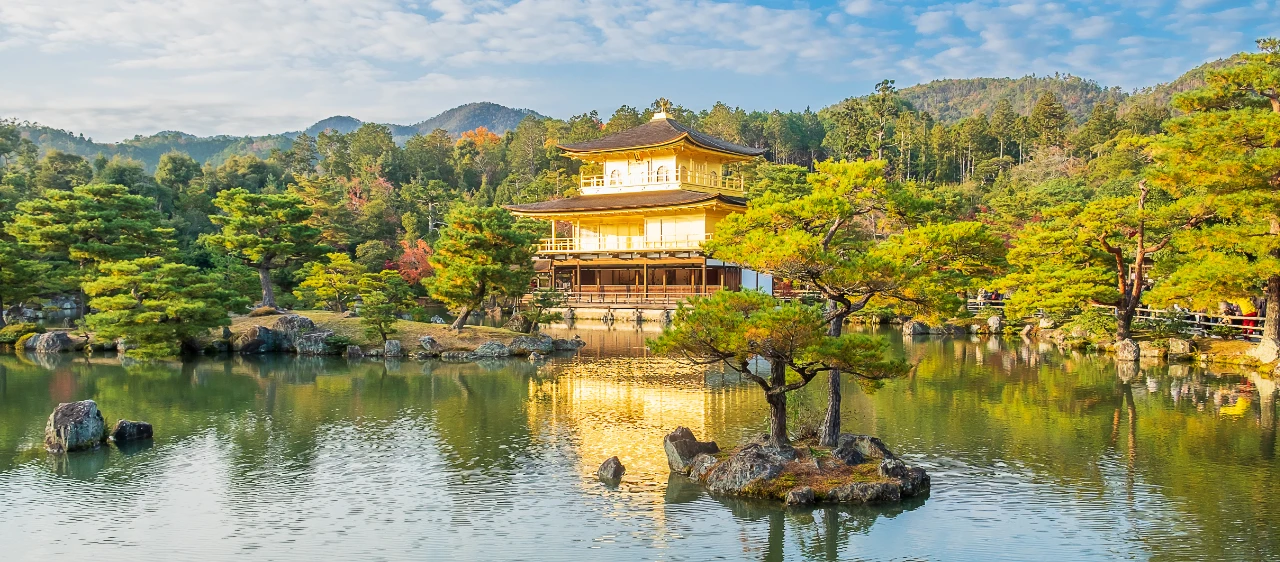Majestic Kyoto: Where Tradition Whispers in the Wind
In Kyoto, tradition isn’t a performance—it’s a presence. It lingers in every quiet alley, every fluttering kimono, every bamboo stalk swaying in the breeze. This ancient Japanese city invites you not just to visit, but to slow down, listen, and feel history moving gently through the present.
Majestic Kyoto is not a destination you rush through. It’s a place to breathe in centuries of culture and walk in the shadow of emperors, monks, and poets. Here, modern life coexists with the rituals of the past—seamlessly and with grace.
Walking Through Time in the Old Capital
For over a thousand years, Kyoto was the heart of Japan’s imperial court. Unlike Tokyo’s fast pulse, Kyoto beats slowly, softly, and with purpose. Every stone path and shrine gate is part of a living heritage.
Wander through Gion, the famed geisha district, where wooden machiya houses line the streets and lanterns glow softly at dusk. You may glimpse a geiko or maiko, gracefully stepping toward a traditional tea house. It’s a scene unchanged for generations.
In Higashiyama, the eastern hills of the city, narrow lanes wind past temples, artisan shops, and teahouses. Walk slowly. The magic is in the small moments—a chime in the wind, the smell of incense, a temple bell in the distance.
Temples That Touch the Soul
Kyoto is home to over 1,600 temples and 400 shrines, each with its own rhythm and story. Some are grand and iconic, others hidden and silent.
Kinkaku-ji, the Golden Pavilion, shimmers above a reflective pond like something out of a dream. Its golden leaf exterior mirrors the sun, the seasons, and the visitor’s gaze.
Fushimi Inari-taisha, with its thousands of vermilion torii gates, offers a hypnotic path through the sacred forest of Mount Inari. As you walk through the tunnels of red, the world quiets down and the spirit awakens.
Ryoan-ji presents peace in the form of a Zen rock garden—an arrangement of stones and gravel that holds no definitive meaning, inviting silent reflection.
Seasons as Poetry
Each season in Kyoto paints the city with different brushstrokes:
- Spring brings cherry blossoms that flutter like pink snow along the Philosopher’s Path.
- Summer hums with cicadas and the vibrant energy of Gion Matsuri, one of Japan’s most celebrated festivals.
- Autumn sets the maple leaves ablaze in hues of red, orange, and gold, especially in places like Tofuku-ji and Arashiyama.
- Winter dusts temple roofs with snow, casting a serene stillness over the city.
In Kyoto, the passing of seasons isn’t just weather—it’s ritual, memory, and mood.
The Art of Stillness
Kyoto teaches you to appreciate the quiet. The slow steeping of tea. The curve of a garden path. The silence before a temple prayer.
In a world that often moves too fast, Kyoto offers an invitation to be still, to observe with attention, and to let the noise fall away.
Take part in a tea ceremony—not just to drink, but to experience hospitality as an art. Visit a ryokan (traditional inn) where tatami mats and futon beds create a calm, minimalist retreat. Wear a yukata. Listen to your footsteps on polished wood.
Stillness, here, is not emptiness. It’s depth.
Taste the Heritage
Kyoto’s cuisine reflects its elegance and precision. It’s subtle, seasonal, and beautifully arranged.
Try kaiseki ryori, a multi-course meal that balances taste, texture, and presentation. Each dish is like a haiku—deliberate, minimal, expressive.
Enjoy yudofu (tofu hotpot) near temple grounds, or matcha sweets with a view of a moss garden. Kyoto is the birthplace of many Japanese culinary traditions, and food here is more than nourishment—it’s ceremony.
Arashiyama: Nature and Nobility
A short trip west of the city center brings you to Arashiyama, where nature takes the lead. Walk through the famous bamboo grove, where towering stalks sway and whisper in the wind. It’s a surreal, almost otherworldly experience.
Visit Tenryu-ji Temple, then take a boat ride down the Hozugawa River or cross the Togetsukyo Bridge at sunset. Arashiyama blends nature, culture, and nobility in perfect harmony.
Crafts and Culture
Kyoto is a city of artisans. From silk weaving to pottery, from calligraphy to fan-making, centuries-old skills are preserved and passed down.
Visit local workshops or traditional markets like Nishiki Market, where you can taste, touch, and learn from the people who shape Kyoto’s identity.
Take home a hand-painted fan, a fine ceramic tea bowl, or a delicate washi paper notebook. These are not just souvenirs—they are pieces of a living tradition.
Why Kyoto Stays With You
Kyoto doesn’t impress with scale. It impresses with presence. Its majesty is quiet, not loud. Its beauty is in the balance between nature and architecture, ritual and daily life, memory and now.
It’s a place where tradition doesn’t shout—it whispers in the wind, in the sound of leaves, in the echo of steps across a wooden floor.
Kyoto teaches you to notice again. To feel more deeply. To remember that beauty often hides in silence.
Begin Your Journey
Let Holiday Vacation guide you to Kyoto—whether for cherry blossoms, autumn colors, or the peaceful grace of temple life. In Majestic Kyoto, your story joins a much older one, carried gently by the wind.


